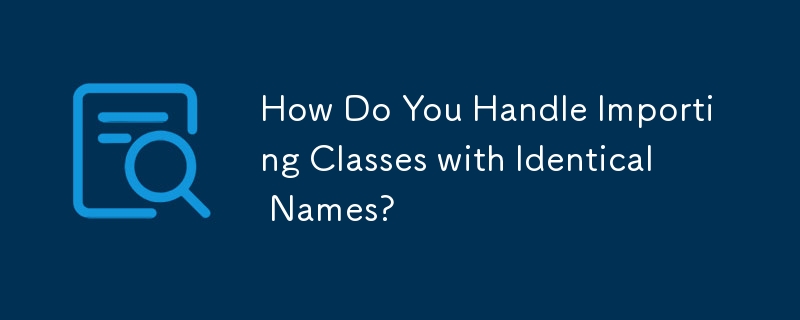Home >Java >javaTutorial >How Do You Handle Importing Classes with Identical Names?
How Do You Handle Importing Classes with Identical Names?
- Mary-Kate OlsenOriginal
- 2024-11-11 16:28:021052browse

Importing Classes with Identical Names: Strategies and Considerations
When importing multiple classes with the same name from different packages or libraries, this conflict can arise. Let's analyze this scenario and explore the options to handle it.
In the given code, there are two classes named Date imported from java.util and my.own. To avoid ambiguity, we need to choose the specific class for each case:
// Specify the full qualified class name for 'my.own.Date' my.own.Date myDate = new my.own.Date(); // No need to specify the full qualified class name for 'java.util.Date' (because it's already defined) Date javaDate = new Date();
Another option is to omit the import statements and use the entire class path when referencing the classes explicitly:
// Using the full qualified class name java.util.Date javaDate = new java.util.Date(); // Using the full qualified class name my.own.Date myDate = new my.own.Date();
While this approach ensures clarity, it may not be convenient and can clutter the code.
As a general practice, it's advisable to avoid naming conflicts between classes from different packages. If unavoidable, the recommendation is to use fully qualified class names consistently to prevent ambiguity.
The above is the detailed content of How Do You Handle Importing Classes with Identical Names?. For more information, please follow other related articles on the PHP Chinese website!

